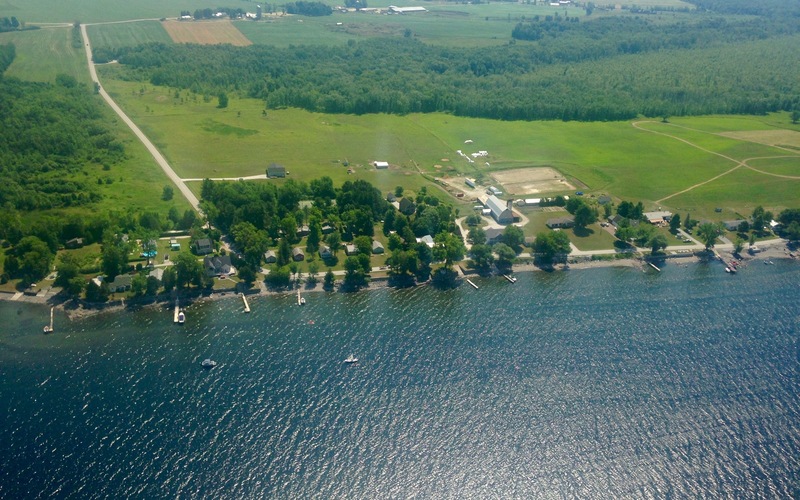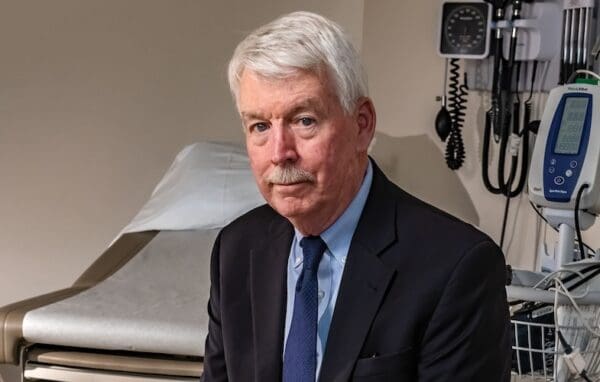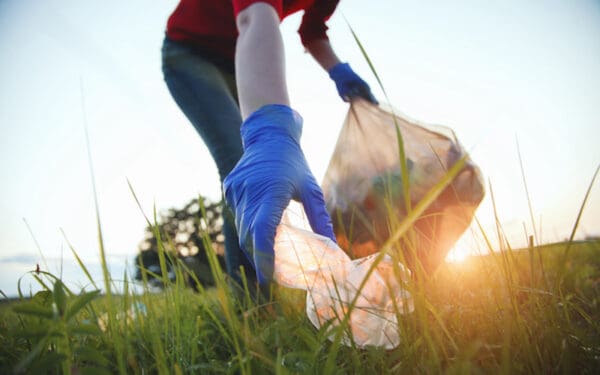
Vermont's broken system for enforcing clean water regulations has left farmers in the middle and water quality at risk. Photo: Lighthawk
Back in 2016, EPA recognized that too much pollution was sullying Lake Champlain. It stepped in and required Vermont to protect the Lake from the excess phosphorus that continues to cause the state’s waters to run with toxic algae. The plan called for all Vermonters – towns, businesses, and farms alike – to play their part
Since then, Vermont’s farmers have significantly reduced the phosphorus pollution that runs off their facilities and fields. That’s important, because no sector sends as much phosphorus to Lake Champlain as agriculture. But farms have a long way to go, and their progress has plateaued.
Unfortunately, two irreconcilable state agencies and a broken regulatory system prevent Vermont from realizing its clean water goals. Vermont’s Agency of Natural Resources and its Agency of Agriculture share responsibility for controlling water pollution from the state’s farms. But the two agencies often treat each other as rivals in this setting. Their strained relationship has derailed Vermont’s compliance with the Clean Water Act and stalled progress on reducing pollution from farms.
That’s why CLF – in partnership with Vermont Natural Resources Council and Lake Champlain Committee – documented Vermont’s failures and asked EPA to intervene. EPA launched an investigation and found that Vermont does not adequately regulate industrial farms. EPA has directed Vermont to fix its regulatory system and to consolidate authority over agricultural water quality within the Agency of Natural Resources. The Agency of Natural Resources has until December 5, 2024, to draft a plan explaining how it will do that.
This marks a significant victory for Lake Champlain and all the state’s rivers, lakes, and streams. Here’s why.
Water Pollution from Farms Is a Big Deal
Farms produce a lot of waste. One industrial farm’s sanitary waste can dwarf an entire city’s. For example, the 4,000 mature dairy cows on Vermont’s largest farm produce as much raw waste as 188,880 people. That’s four times the population of Burlington, Vermont.
All that waste must go somewhere. But farms don’t send their waste to sewage treatment facilities like cities and towns do. Instead, large farms store phosphorus-laden manure in massive pits known as “lagoons.” Later, farms spread it on fields as fertilizer. When not handled and applied responsibly, the manure can run off farmland or farm structures, polluting lakes, streams, and rivers. And a lot of manure does. It’s no wonder that EPA describes agricultural runoff as the leading cause of water quality impairment.
An Inter-Agency Rivalry and a Jurisdictional Split Make for a Broken System
In Vermont, the Agency of Natural Resources and the Agency of Agriculture are supposed to collaborate as they uphold the Clean Water Act on farms. Vermont law directs the Agency of Natural Resources to regulate agricultural pollution from “point sources” on farms. These include pipes, ditches, equipment spraying pesticides, and manure lagoons. The Agency of Agriculture is meant to address pollution from “nonpoint sources,” like some – but not all – runoff from farmland.
But the distinction between point sources and nonpoint sources is a legal fiction. It has no basis in farming’s realities. As the Agency of Agriculture’s Director of Water Quality explained in 2020, “On paper, every definition is clear. In the field, no definition is clear.”
Moreover, the two agencies too often act as rivals with competing goals. One consultant, hired in 2016 to resolve the agencies’ troubles, observed that they pursue “divergent missions,” lack a “[s]hared articulation of outcomes,” and suffer from a “[h]istory of errors.” Three years later, Secretary of Natural Resources Julie Moore was forced to respond in an email exchange to accusations leveled by an Agency of Agriculture staffer that her agency’s work was a “waste of taxpayer dollars.”
Vermont’s Broken Regulatory System Hurts Farmers and Water Quality
The rivalry between the Agency of Natural Resources and the Agency of Agriculture doesn’t just damage water quality. Poorly run government programs also hurt Vermont’s farmers. In 2021, a member of the Task Force to Revitalize the Vermont Dairy Industry explained that “farmers get buffeted [between the agencies], not knowing where to go, not knowing who to talk to. They’re getting caught in the middle.” Another member of the Task Force described farmers as “the pinball being batted around.”
Farmers don’t deserve regulatory crossfire. It’s confusing, wastes farmers’ time and money, and makes it harder to protect water quality. Farmers face enough challenges. Feuding agencies shouldn’t be one of them.
EPA Has Directed Vermont to Fix How the State Regulates Farms
EPA investigated the issues laid out by CLF and our partners. The agency concluded that Vermont doesn’t adequately regulate industrial farms. Enforcement is lax, monitoring is limited, and farms that need Clean Water Act permits don’t have them.
Moreover, EPA determined that the Agency of Natural Resources and the Agency of Agriculture must not regulate agricultural water quality together: “Dual authority over the regulation of agricultural stormwater has existed in Vermont for decades now and has failed to ensure compliance with the [Clean Water Act].” According to EPA, ensuring that the Agency of Natural Resources has full authority to regulate agricultural water quality “is the only workable solution.”
EPA has given the Agency of Natural Resources until December 5, 2024, to develop a plan to fix how Vermont regulates water pollution from farms. That plan will chart a path towards a better regulatory system for farmers and water quality alike. Success will require major change, not small adjustments. Vermont must re-write regulations and legislation, provide agencies with necessary resources, work with farmers, and partner with communities.
And CLF will be there every step of the way. Our petition revealed the problem. Now, we’ll work with Vermont to implement the solution: a system that consolidates responsibility within a single expert agency, that establishes clear expectations, and that delivers clean water to all Vermonters.



